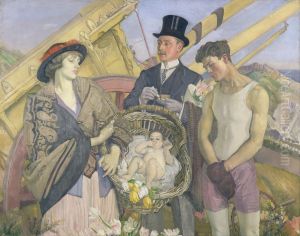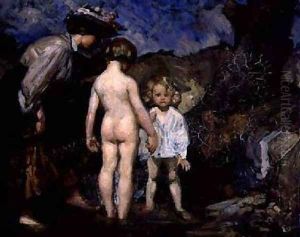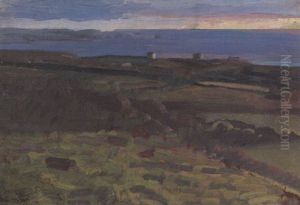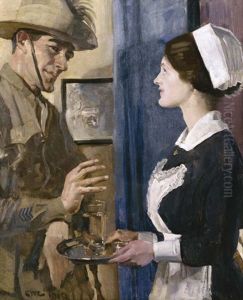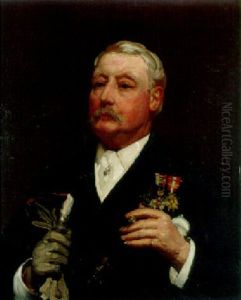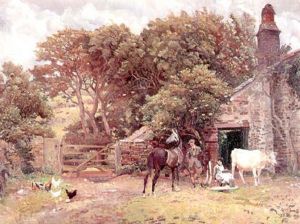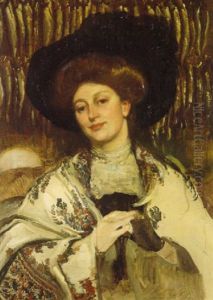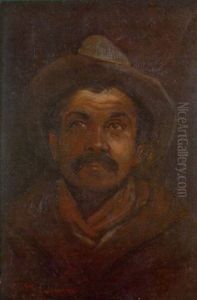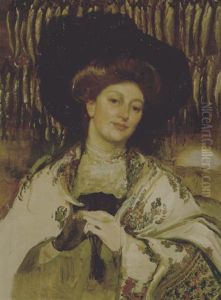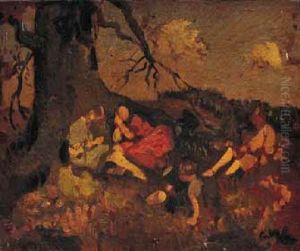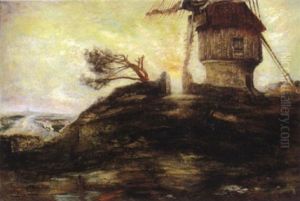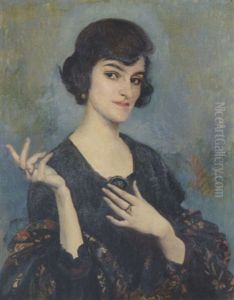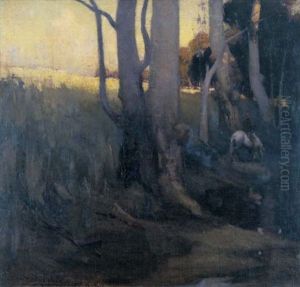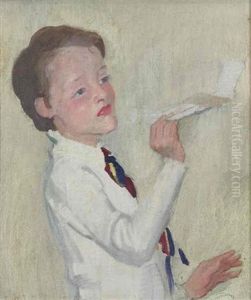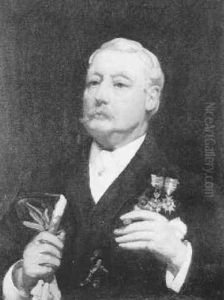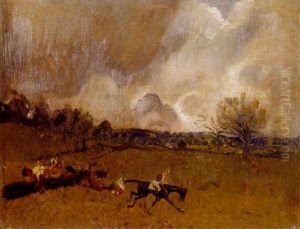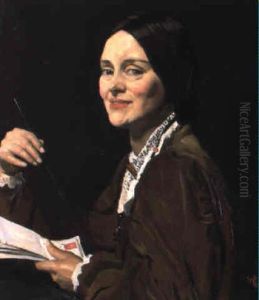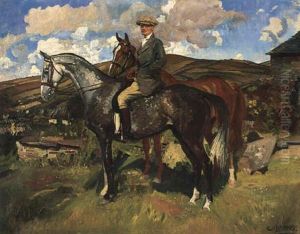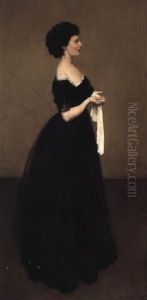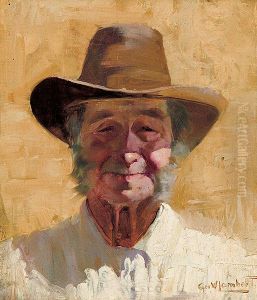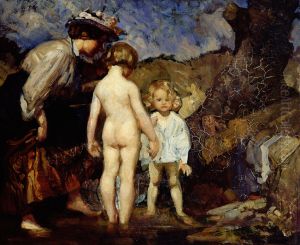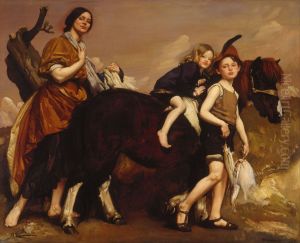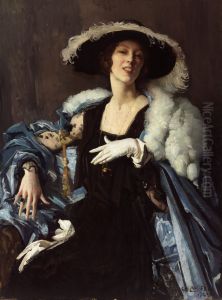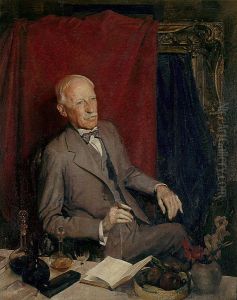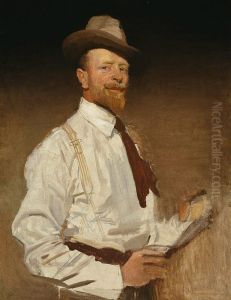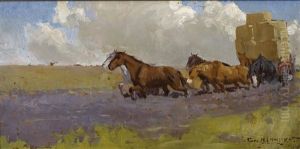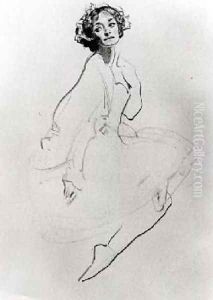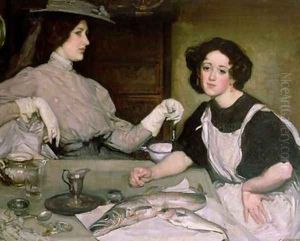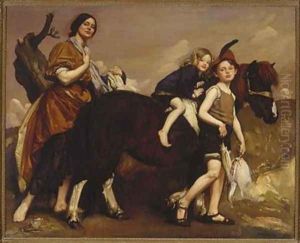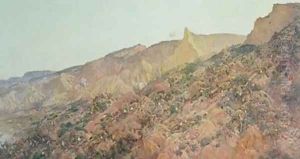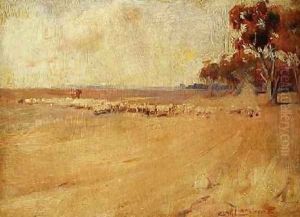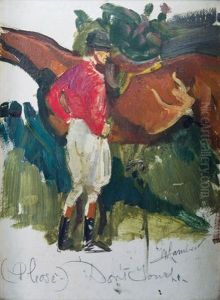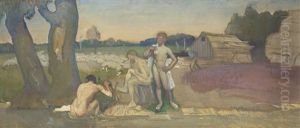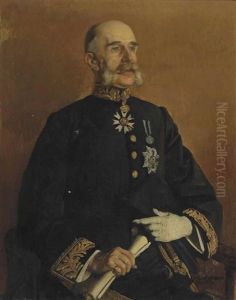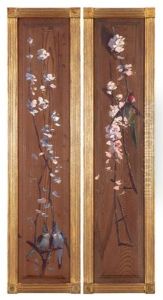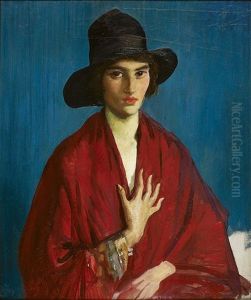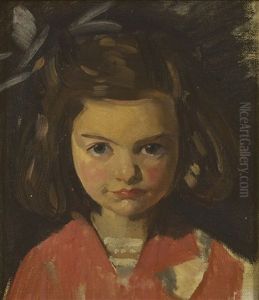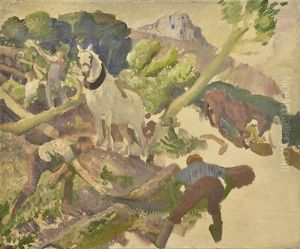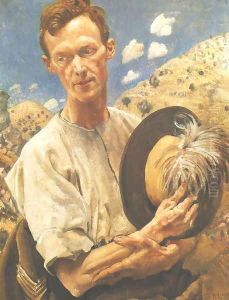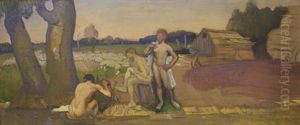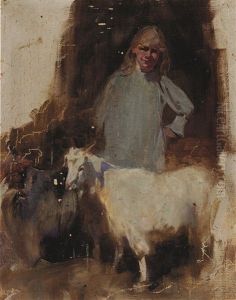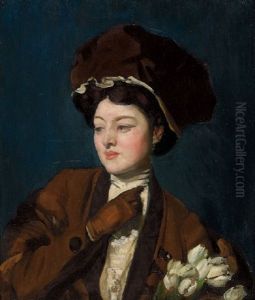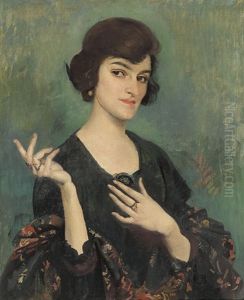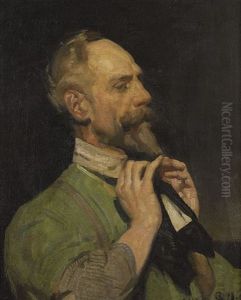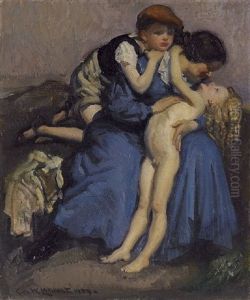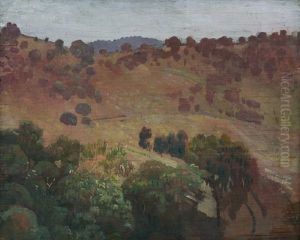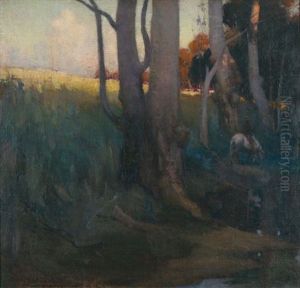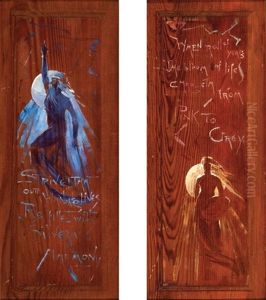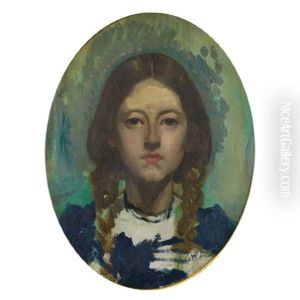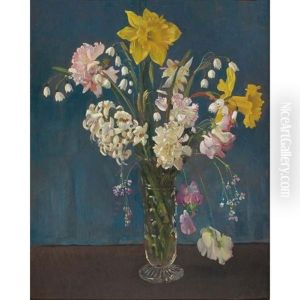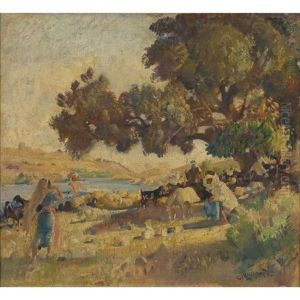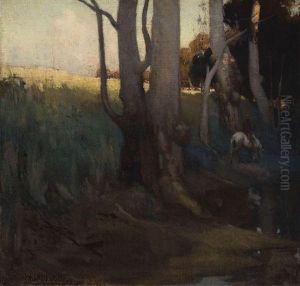George W. Lambert Paintings
George Washington Thomas Lambert was an Australian artist, known for his portraiture, landscape paintings, and war art. Born on 13 September 1873 in St Petersburg, Russia, to American parents, Lambert spent his early childhood in Russia and Germany before his family migrated to Australia in 1887, settling in Sydney. He showed early artistic talent and began his formal training at Julian Ashton's Art School in Sydney in 1894.
Lambert's early work was influenced by the Heidelberg School, a movement of Australian Impressionism, but he soon developed his distinct style. He was particularly acclaimed for his portraiture, capturing the likeness and character of his subjects with a bold, spirited brushwork and a sophisticated use of color. In 1900, he won the first traveling scholarship of the New South Wales Society of Artists, which allowed him to study in Paris. During his time in Europe, Lambert was exposed to the works of the Old Masters, and the experience greatly influenced his technique and approach to painting.
In 1901, he married fellow artist Amy Absell, with whom he had two children. Lambert's European sojourn continued until 1904, after which he returned to Australia and established himself as a leading portraitist. His reputation grew, and he received numerous commissions, including portraits of prominent Australians and historical paintings.
During World War I, Lambert was appointed an official Australian war artist by the Australian Imperial Force. His experiences at the front lines deeply impacted him and his work, resulting in some of the most significant war-related artworks of his career. His paintings from this period, such as 'Anzac, the landing 1915' and 'Charging Anzacs', are powerful depictions of the Australian experience in the war. Lambert's war art contributed to the shaping of Australia's national identity and collective memory of the war.
After the war, Lambert continued to work prolifically. He was a founding member of the Australian Art Association and served as a trustee of the Art Gallery of New South Wales. Lambert's influence extended beyond his paintings, as he was also a respected teacher and mentor to other artists. Despite his success, he struggled with financial difficulties and health problems in his later years.
George W. Lambert died on 29 May 1930 in Cobbitty, near Camden, New South Wales, Australia. His legacy is preserved through his extensive body of work, which includes some of the most iconic images of early 20th-century Australian art, and in the collections of major Australian galleries. Lambert is remembered not only for his artistic achievements but also for his charismatic personality and significant contributions to the cultural landscape of Australia.
